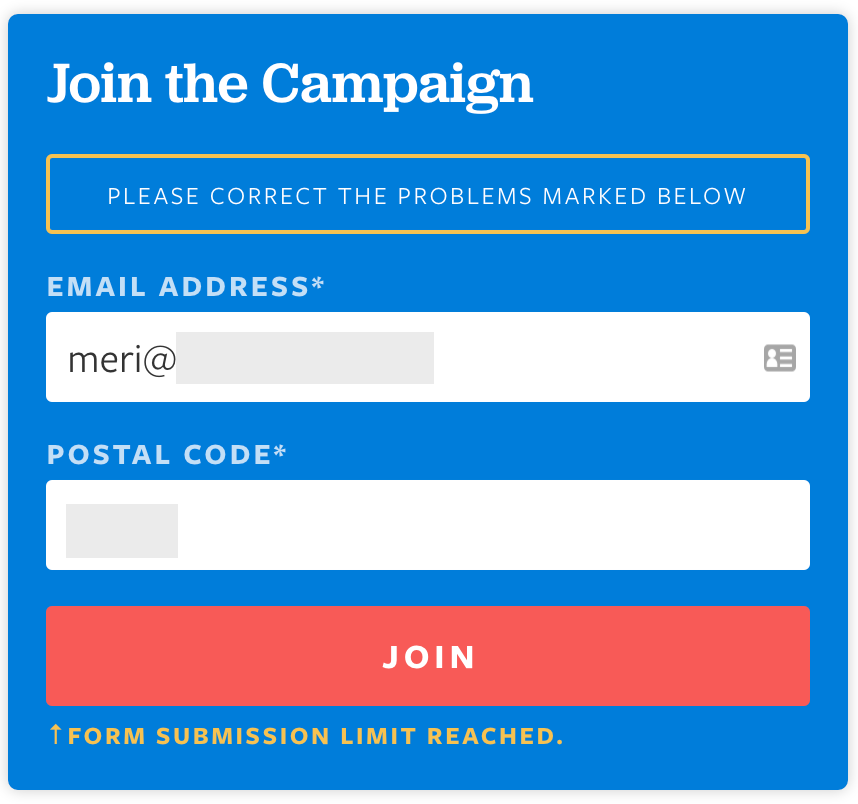Sales
About that permission thing
I wrote a few days ago about permission and how it was the key to getting into the inbox. It’s another one of those “necessary but not sufficient” parts of delivery. There are, however, a lot of companies who are using email without the recipient permission. These companies often contact me to help them solve their delivery problems. Often these are new companies who are trying to jumpstart their business on the cheap by using email.
The calls have a consistent pattern.
I cannot feel the Bern.
On a lark (and to do my best to stay as informed as possible via primary sources) I decided to sign up for the official mailing lists of the Trump, Clinton, and Sanders campaigns.
Both Trump and Clinton were happy to take my email address and add it to their distribution lists, no confirmation required. Not terribly surprising, since they need to make it as easy as possible to get their messages out to anyone who will listen.
On to the Sanders campaign.
I… couldn’t figure out how to subscribe to Sanders’ mailing list.
I feel I must have missed something obvious. I’m certainly not saying that I’m a super-genius or anything… but, at the same time, if I can’t figure out how to get your mail, then it might just be that others are having similar problems.
The first obvious place to sign up for updates was the big blue “This is your movement” box. That route requires a donation to proceed. Back to the main page.
The next option would sign me up for mobile alerts. No thanks.
All the way at the bottom of the page, a final big blue box asks, “Are you ready?” Somewhat beyond ready, I entered my information, clicked “Join us” and held my breath.
The “Form submission limit reached” error is likely indicative of the use of outsourced product or service being used to collect and manage contact information on behalf of the campaign. My actually seeing this error is indicative of insufficient testing of the site by the campaign.
I’m sure the developer promised a bulletproof site, and it seems the campaign took this on faith. But at least one thing fell through cracks, resulting in the campaign not just losing an avenue of communication with someone who has self-selected as interested, but also potentially diminishing that person’s opinion of how the campaign manages the finer points, and wondering how that ultimately reflects on the candidate. Ultimately, it doesn’t matter whether or not the campaign developed the site themselves or hired someone else to do it on their behalf. All that matters is that they put their name on it, and let it speak for their brand.
Campaigning is sales. Whether you’re selling a candidate or a stock portfolio or a hand-made product, when you invite your audience to interact with you online, they must find the experience to have been worth their time, otherwise they’re unlikely to take you up on any future invitations. In business, as in politics, there’s a lot on the line, communication is vital, and mastering digital interaction with the public is no longer optional.
And while I was writing this post, I started receiving mail from the Sanders’ campaign. So I guess I could subscribe after all.
For the spammer that has everything
Sales are everywhere on Black Friday, even in the spammer underground.
HT: Brian Krebs
Delivery and marketing, another view
In addition to posting some of my thoughts about how delivery and marketing have different and possible contradictory constraints, I asked folks on the Only Influencers list what they thought. They had some different perspectives, primarily being marketers. One person even welcomed me to the dark side.
The general response from the marketing side of things appeared to be that ISPs need to stop actually filtering marketing email. That would resolve the problems from the marketers perspective. I don’t necessarily think that will help. I believe if marketers had unfettered access to the inbox, most inboxes would be totally un-useable.
My thinking triggered other folks to consider delivery and marketing and what drives both. George Bilbrey, from Return Path, posted an article in Mediapost looking at why good delivery is an important part of a good marketing strategy.
George points out many marketers really do act as if delivery is separate and detrimental to good marketing.